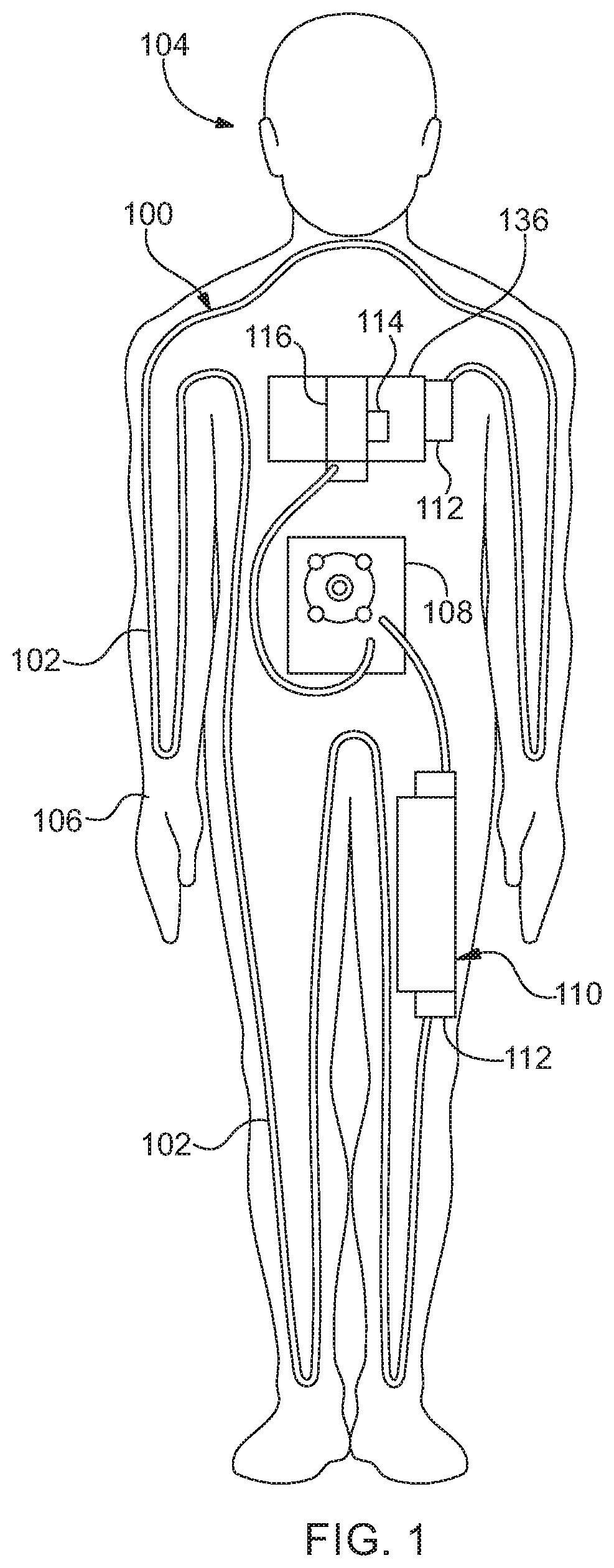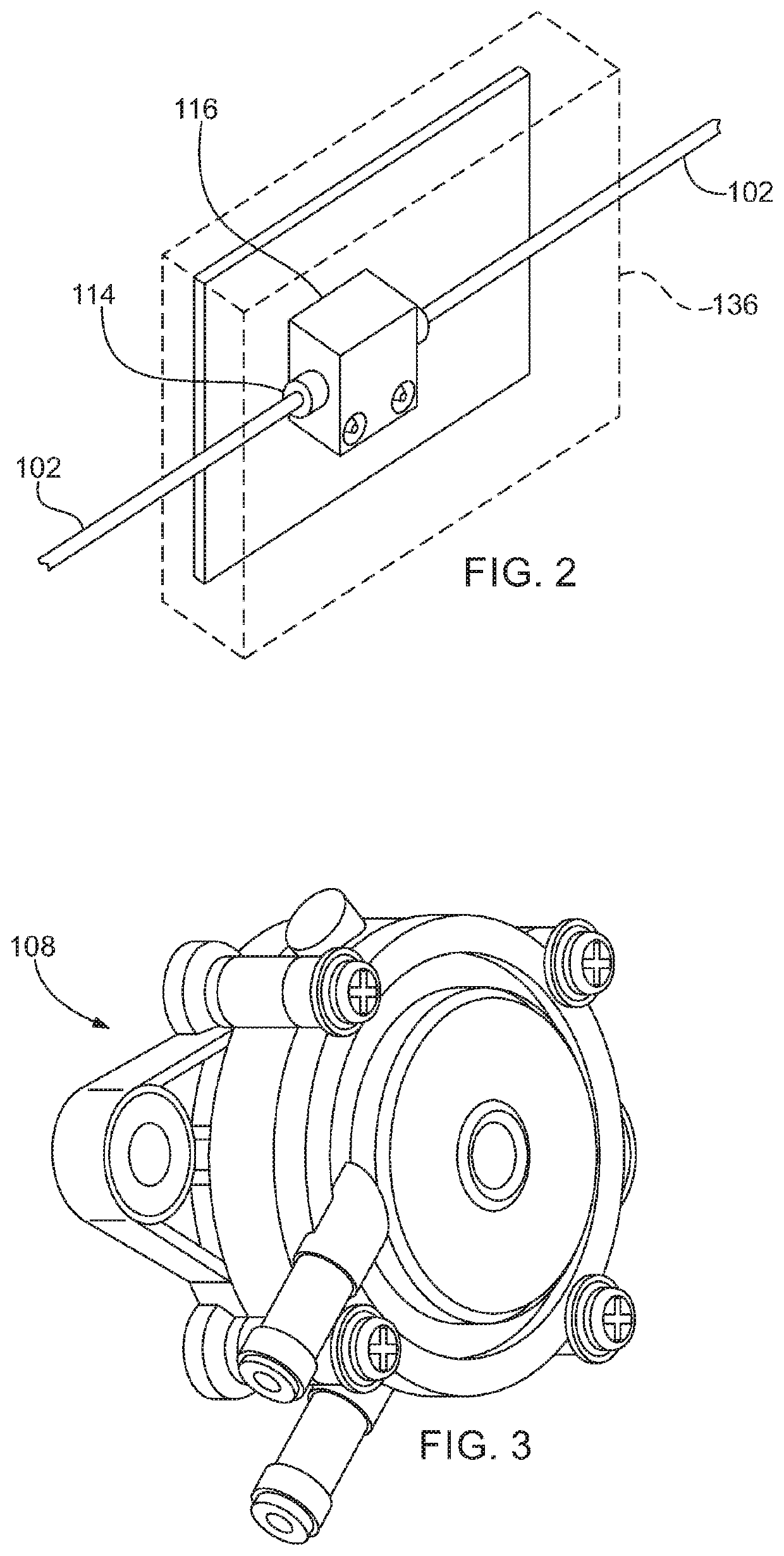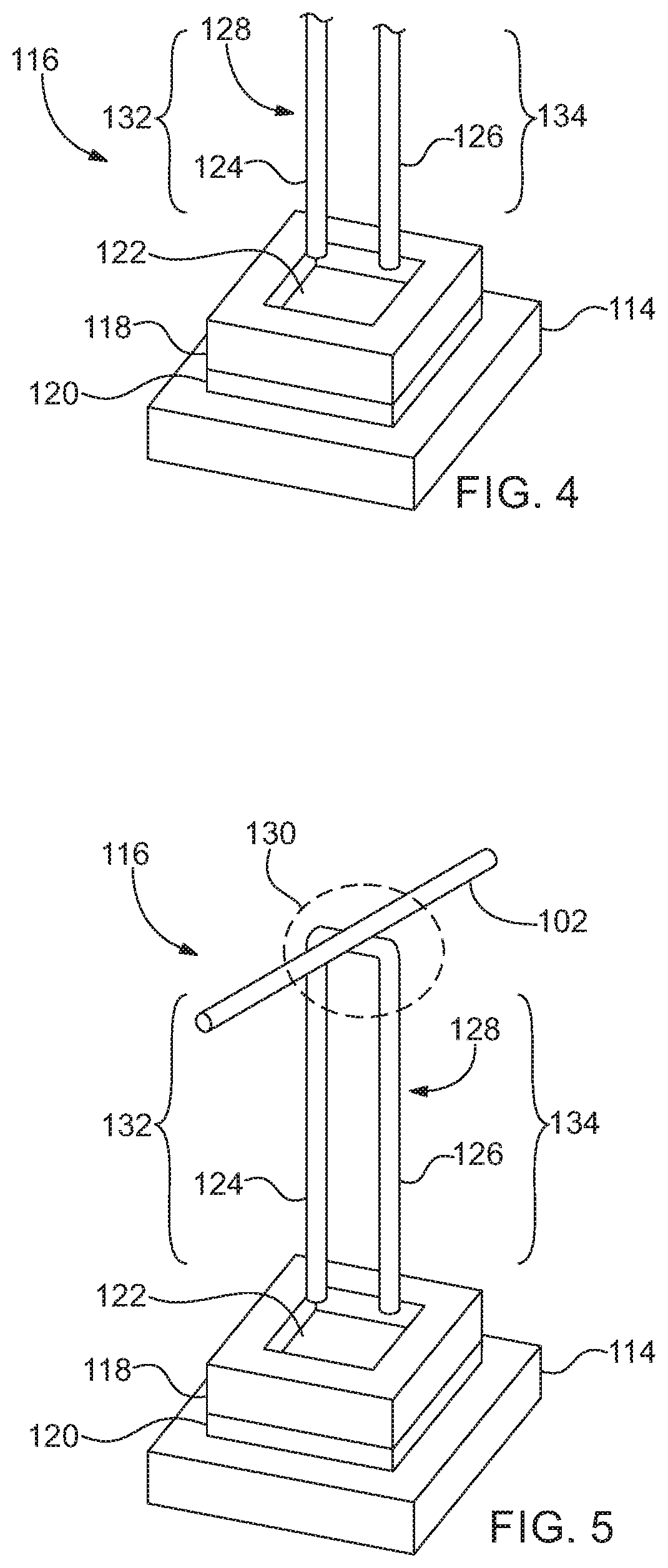Warming of simulated blood using waste heat generated by electronic components
a technology of electronic components and heat generation, applied in the field of medical simulators, can solve problems such as inability to effectively transfer heat from electrical components to electronic components, damage to electronic components, and circuit design problems, and achieve the effect of removing waste heat from electronic components
- Summary
- Abstract
- Description
- Claims
- Application Information
AI Technical Summary
Benefits of technology
Problems solved by technology
Method used
Image
Examples
Embodiment Construction
[0021]The following description is of exemplary embodiments that are presently contemplated for carrying out the present invention. This description is not to be taken in a limiting sense, but is made merely for the purpose of describing the general principles and features of the present invention. The scope of the present invention is not limited by this description.
[0022]Referring to FIGS. 1-3, embodiments can include a simulated vascular system 100. The simulated vascular system 100 can include at least one conduit 102 configured to allow fluid to pass there-through. In some embodiments, the simulated vascular system 100 can include a network of conduits 102. For example, a network of conduits 102 can be configured to resemble a vascular system of a human or some other animal, and the fluid can be configured to resemble blood (e.g., simulated blood).
[0023]In some embodiments, the simulated vascular system 100 is incorporated into a medical simulator 104. For example, the medical ...
PUM
 Login to View More
Login to View More Abstract
Description
Claims
Application Information
 Login to View More
Login to View More - R&D
- Intellectual Property
- Life Sciences
- Materials
- Tech Scout
- Unparalleled Data Quality
- Higher Quality Content
- 60% Fewer Hallucinations
Browse by: Latest US Patents, China's latest patents, Technical Efficacy Thesaurus, Application Domain, Technology Topic, Popular Technical Reports.
© 2025 PatSnap. All rights reserved.Legal|Privacy policy|Modern Slavery Act Transparency Statement|Sitemap|About US| Contact US: help@patsnap.com



